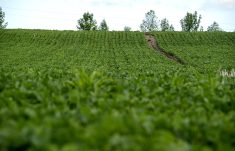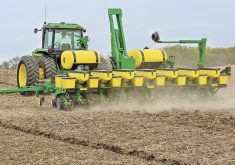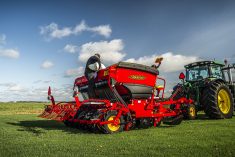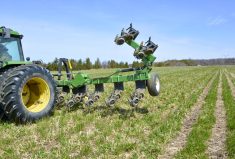Farmers share how they adapted existing iron rather than buy new
Are high equipment prices keeping farmers from achieving production goals? Modifying equipment in the shop, rather than buying the right implement outright, could be a solution.
Why it matters: Modifying and constructing equipment on the farm can alleviate the high costs of machinery.
Through 2022, Colin Elgie and Andrew Barrie, soil fertility and environmental specialists with the Ontario Ministry of Agriculture, Food and Rural Affairs, visited farms across the southern and western areas of the province to see how creativity and elbow grease can result in unique, effective and comparatively affordable equipment designs.
Read Also
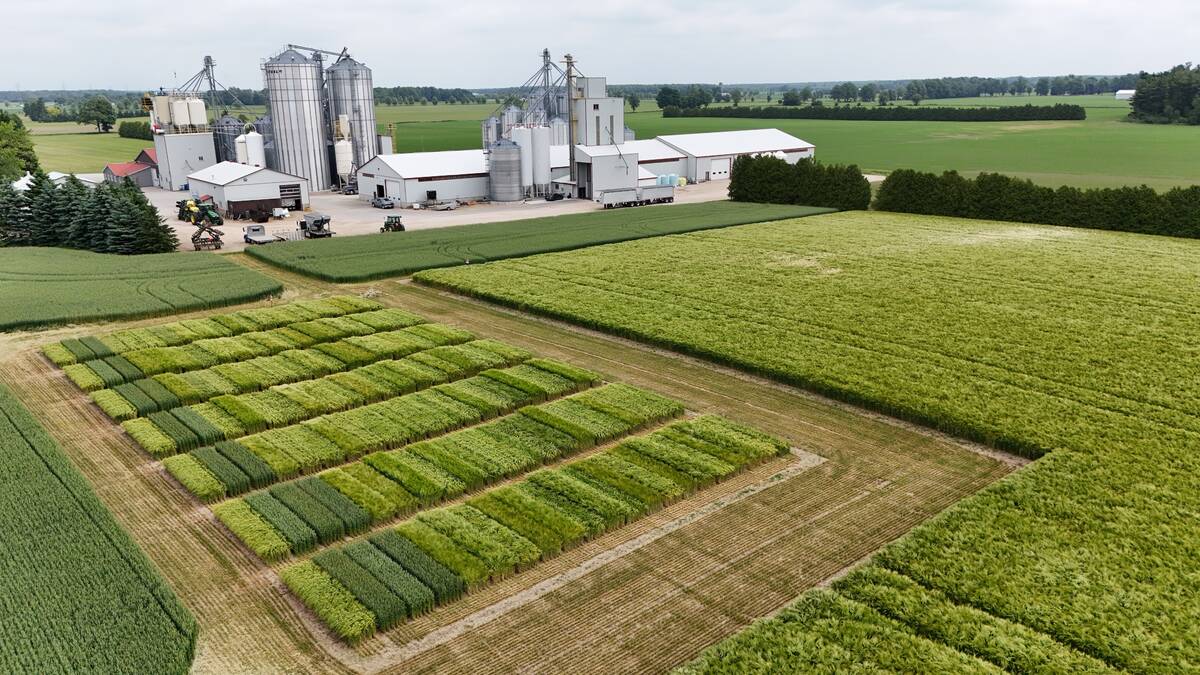
Winter cereals beyond wheat gaining traction
Winter cereals such other than wheat, such as barley, could provide better yield and rotation options for Ontario growers.
Henry and Jeremy Denotter
Location: Kingsville
Crops: Corn, soybeans, wheat, buckwheat
Henry Denotter and his son, Jeremy, have been modifying equipment to suit their 20-inch row cropping system. This includes a hand-constructed, multicoloured corn combine header, self-propelled sprayer and fertilizer applicator.
Better fertility placement was a driving factor for the latter, particularly since no-till corn had proven challenging. What they needed, says Henry, was an implement that could get fertilizer below the soil surface, but do so in a manner suitable to their soil health goals.
The result was a ripper, modified for 20-inch rows, mounted to the back of a Salford air cart. Fertilizer enters the ripped trench via tubes located just above the soil surface.
“The reason we don’t inject or have the actual [fertilizer] pipe right down in the ground is…there’s about three quarters of a second behind the blade coming by, on an RTS, where that trench will stay open enough you can put the material in it. That’s what we’re relying on,” says Jeremy, noting a quick application speed is ideal.
They also opted to install steel fertilizer tubes to improve machine durability.
The Denotters use the implement to apply fertilizer in the autumn, then plant corn in the same rows in spring. With heavy clay soil and unpredictable weather, a backup plan for spring application is standard practice.
“You can put a lot of stuff on top, but roots don’t grow above the ground. They grow below the ground. It’s not a massively expensive strip tilling machine. It’s parts and pieces put together to make it do what we think we want,” says Henry.
“We tried this 15 years ago. I think we missed a row more than we hit it but once we tuned things up, and Jeremy’s expertise with all the GPS and John Deere mounted equipment, we were able to get it within half an inch. The accuracy definitely is the clincher to make it all work.”

Mark Richards
Location: Dresden
Crops: Corn, soybeans, wheat, sugar beets, tomatoes
Mark Richards wanted a dual-purpose fertility-application and strip-till machine that fits his cropping and soil health system, which is characterized by cover cropping and light strip till.
He created what he refers to as a “strip freshener” from a used Lilliston cultivator and central bar. After redoing the wheels and bearings, the 40-foot implement is used to lightly till strips while applying fertilizer just ahead of the tillage units.
“I always like the Lillistons, the way they fluff the ground up, and you can change the angle on them to be more aggressive,” says Richards. “I bought used Lilliston cultivators [and] Allis Chalmers mounts for the bars. I found what I could, then I bought brand new wheels and bearings.
“If you’re not putting fertilizer on, you can fly through the field at eight miles per hour. It does a beautiful job of breaking lumps up and freshen that strip.”
Richards estimates the dual-purpose strip freshener cost about $25,000 to build. Another fertilizer application goal involves replacing the implement’s Y-drop application capability, used in-season, with spoke-wheel applicators.
“Spike wheels are about $1,200 apiece, and to do this [implement] you need 32 of them. So that won’t be a cheap investment.”
Warren Schneckenburger
Location: Morrisburg
Crops: Corn, soybeans, wheat, edible beans
The goal of diversifying crop rotations turned Warren Schneckenburger’s attention to strip-till. A used 16-row, coulter-based strip tiller was purchased for a good price, although its structural integrity was lacking.
“We had to make quite a few modifications. Not so much modifications, but updating the structural integrity of some of the components that the previous owner had attempted to fabricate,” says Schneckenburger. This involved adding a few hundred pounds per row in steel components and shoring up the coulter units.
“We are blessed with some pretty heavy clay, but we are also blessed with a lot of rock… A lot of what we had to do was beef this machine up because of the speed it’s traveling, the weight we added on the bar to keep these blades in our heavier soils. When we impact stones, things can be pretty catastrophic so things need to be pretty strong.”
Funding from Growing Forward 2 was also leveraged to upgrade the row cleaners. These were augmented with extended unit arms and grass knives to eliminate wrapping problems.

Laurent (Woody) Van Arkel
Location: Dresden
Crops: Corn, soybeans, wheat, sugar beets, sunflowers, sesame
Long-time no-till and strip-till farmer Woody Van Arkel has been trying to balance minimum soil disturbance, perennial cover crop strips and effective fertility application, with particular emphasis on manure management.
He built what he calls a “poor man’s manure injection system” from his tank applicator. The modified machine uses old nose coulters, acquired for a reasonable price, to cut slots and loosen the soil, allowing applied manure to soak in more easily.
Van Arkel can then drill his cover crop in the same strips. Aside from a much lower cost, he says the strip applicator causes less soil disturbance compared to many commercial manure injectors.
“This is a little bit of junkyard engineering by inventory, as I call it,” says Van Arkel.
“Just being a small operation, there are some elaborate manure injectors on the market. But I can’t really justify the cost for the size of my operation…I’m a bit spending impaired at times.
“So, this is a low-cost alternative. Moving forward, I’d like to put a bit more down pressure on the hydraulic system to try and get the coulters in the ground a little deeper, especially in dry conditions.”
Van Arkel also developed a “unicorn drill” with the same budgetary restrictions in mind. The traditional box-hopper design was intended to make it easier to grow row crops between rows of perennial cover crops.
“The original design was to go with an APV air seeder mounted on [the drill]… Again costs of an APV being about $18,000, I bought the box for $800. About $1,000 for a used hydraulic drive and speed sensor, and then a $2,600 Raven rate controller.
“It’s all driven off the rate controller. I can calibrate to seeds and without sliding my openers, it’s incredibly accurate if you take the time to calibrate it.”
Jonathan Zettler
Location: Teeswater
Crops: Corn, soybeans, wheat, alfalfa
Jonathan Zettler uses a number of tillage methods based on crop and conditions. Efforts to improve no-till and green-planting corn seed prompted the modification of a John Deere 7340 planter mounted behind an Unverferth rosin fertilizer cart.
“One of the biggest issues with no-till in certain soil types is trying to get the seed trench to close,” says Zettler, adding older style rubber closing wheels are not always up to the task.
“The way you get the seed trench to close in conventional tillage versus no till is quite a bit different. That’s why we went down the road of doing the planter modifications that we did.”
Those modifications included adding heavier opening wheels for reduced blade flex and better part longevity. More robust seed tube guards and reinforced seed firmers were also added, plus Thompson closing wheels in place of standard rubber closers.
“What these wheels do is they just cut down the side of the seed trench, and then you have no compaction over the top of the seed trench when it’s closing it. Works really well in soils that have no loose soil, so to speak, and you can adjust based on that. When you’re running these, because they are so aggressive, you do have to run a half rate spring if the soil is fairly mellow,” says Zettler.
“The [wheel] notches act as a depth piece so it doesn’t flick seed out. That’s one problem some of these spike closing wheels can have, at times. If they have too much tension and don’t have a depth limiter on, you can end up flicking seed out of the seed trench, especially in worked soils.”
Zettler says that, at $20 or $25, robust seed firmers are a particularly valuable addition.
“It’s a lot cheaper than having a poor stand.”
Growers spoke about their modifications during an on-demand session available at the Ontario Agricultural Conference.






